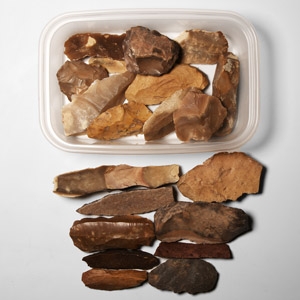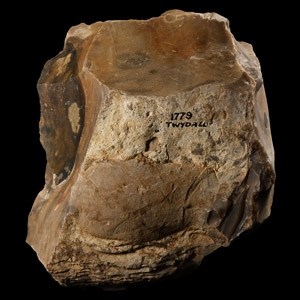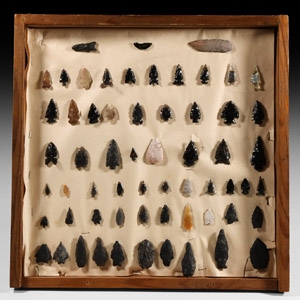Home > Auctions > 21 - 25 February 2023
Ancient Art, Antiquities, Natural History & Coins
Auction Highlights:
Abelita family collection, 1980-2015.
Cf. Khorasani, M.M., Arms and Armour from Iran - The Bronze Age to the End of the Qajar Period, Tübingen, 2006, p.632, cat.283.
This is a type 2 spearhead with a long blade and short tang. The elongated blade had two rivet heads at its base, here effaced by a later restoration. Similar pieces have been excavated in Marlik and Amlash.
Acquired 1980-2015.
Ex Abelita family collection.
Cf. Vahdati, A.A., 'Marlik and Toul-E Talish: a dating problem' in Iranica Antiqua, vol.XLII, 2007, pp.125-138, figs.2, 6, 9, 10.
Bimetallic swords (some examples are entirely cast in iron and others entirely cast in bronze) with disc pommel, slender cylindrical grip and tapering blades of this type are among the most common types of daggers / swords in Northern Iranian graveyards. This type has occasionally been referred to as the 'cotton reel' pommel, as below the flat circular pommel there is a second, a rather wide disc, and a plain or incised cylindrical grip in between.
Found Twydall, Kent, UK.
Richard Jones collection, Welling, Kent, UK, 1912-1915.
Ex Rochester Museum, Kent collections.
Specialist collection of J Edwin Jarvis.
Ex Martin Schoyen collection, London, UK.
Accompanied by a copy of an article on the site at Twydall.
Ex central European collection.
Munich, Germany 1999.
G.M.R.H.collection, West London, UK.
See Villes, A & Luci, K., Dieux des Balkans. Figurines Néolithiques du Kosovo, Paris, 2015, for type.
Acquired 1971-1972.
From the collection of the vendor's father.
Property of a London, UK, collector.
Cf. Glob, P.V., Danske Oldsager II Yngre Stenalder, Copenhagen, 1952, item 547, for type; MacGregor, A., Antiquities from Europe and the Near East in the collection of the Lord McAlpine of West Green, Ashmolean Museum, 1987, nos.5.42.
During Neolithic period, while objects for everyday use, such as knife blades, arrows and lance tips were often only knapped - albeit with very fine retouching - and people soon learnt how to polish selected tools and equipment with sand for a smooth surface. Rotating tubular bone and sand made it possible to fit axes and hammers with a pierced 'eye' for the handle. This eye socket is the preliminary stage of the Bronze Age socket.
Found Twydall, Kent, UK.
Richard Jones collection, Welling, Kent, UK, 1912-1915.
Ex Rochester Museum, Kent collections.
Specialist collection of J Edwin Jarvis.
Ex Martin Schoyen collection, London, UK.
Accompanied by a copy of an article on the site at Twydall.
This tool was part of the collection that was originally donated by a Mr Richard Jones of Welling in Kent to the Rochester Museum. During the period 1912-1915. Mr George Payne of the Kent Archaeological Society also collected along with a Mr George Baker. During 1902 'Sharpes Green Cement Works' was erected, then the smallest cement works on record, using second hand equipment and the last to use Static Chamber Kilns. The processing site was situated on the south shore of the river Medway near Gillingham, Kent, on an island known locally as "Horrid Hill" just off the shore. Horrid Hill was so named because French prisoners of the Napoleonic war who attempted to escape the 'Hulks' moored on the river were hanged here for their efforts. The raw material for the manufacture of cement was extracted from a local quarry in orchard grounds belonging to a Mr Walter Stunt of Lorrendon, Faversham, Kent at a place called Twydall between Chatham and Upchurch. During the removal of the chalk an infilled cavity was broken into on the eastern face of the quarry, which contained very rich lower Palaeolithic material. To facilitate the removal of the extracted chalk from the quarry to the works on the river a trackway was constructed to allow a small horse drawn railway to carry wagon loads of chalk for processing. To transport the loads over the tidal saltmarsh from river bank to the island a causeway was built above the upper tidal limit to the works. The material used was the gravel extracted at the quarry which was useless for the manufacture of cement and which contained the implements. The subsequent erosion caused by the tidal flow of the river exposed the Palaeolithic implements along the stretch of the causeway and, during the period of 1912 to 1915, were collected from the surface. The majority of the material is made up of flakes and cores typical of the 'Clactonian' style with also some Acheulian axes. The implements are well retouched and worked on thick, heavy flakes with high angle platforms, typical of the 'Clactonian' industry. The tools are made from the same marbled north Kent flint which was used at the Swanscombe Palaeolithic site from the ancient lower gravels of the Thames valley. This flint is typically a brown and yellow banded variety derived from the dark green skinned nodules of the "Bull Head" bed which underlies the Thanet sands.
Ex Arthur Halcrow Versage collection, Reigate, Surrey, UK.
From an exposed site, Tenera Region, of The Green Sahara, South Central Sahara.
Acquired 1960s-1970s.
From a private French collection.
Found Twydall, Kent, UK.
Richard Jones collection, Welling, Kent, UK, 1912-1915.
Ex Rochester Museum, Kent collections.
Specialist collection of J Edwin Jarvis.
Ex Martin Schoyen collection, London, UK.
Accompanied by a copy of an article on the site at Twydall.
LOWER PALEOLITHIC PERIOD, CIRCA 400,000 B.P.
Found Twydall, Kent, UK.
Richard Jones collection, Welling, Kent, UK, 1912-1915.
Ex Rochester Museum, Kent collections.
Specialist collection of J Edwin Jarvis.
Ex Martin Schoyen collection, London, UK.
Accompanied by a copy of an article on the site at Twydall.
Found Twydall, Kent, UK.
Richard Jones collection, Welling, Kent, UK, 1912-1915.
Ex Rochester Museum, Kent collections.
Specialist collection of J Edwin Jarvis.
Ex Martin Schoyen collection, London, UK.
Accompanied by a copy of an article on the site at Twydall.
Previously in a private collection since the 1960s.
Property of a Sussex, UK, teacher.
769 - 780 of 2116 LOTS


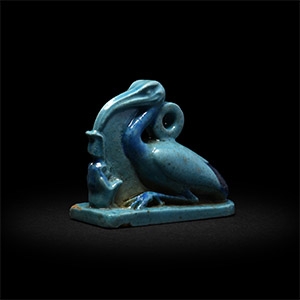



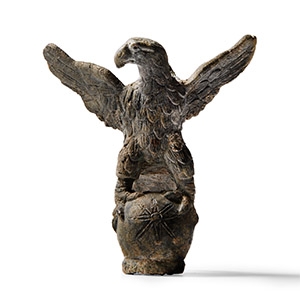
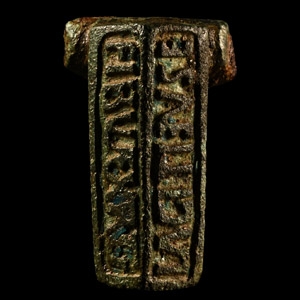

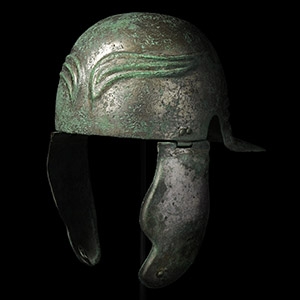
.jpg)
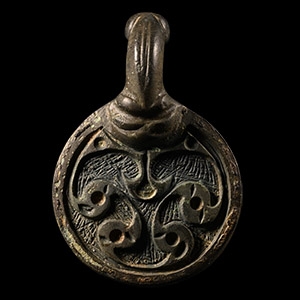
.jpg)
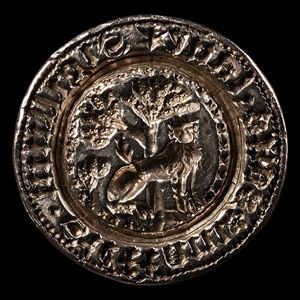
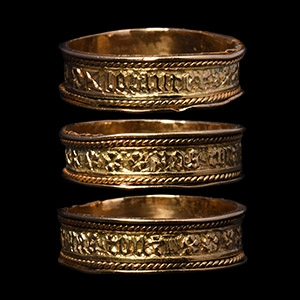


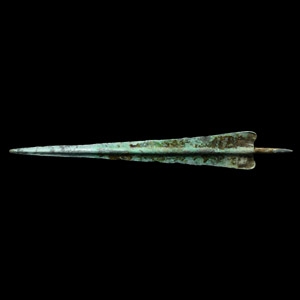
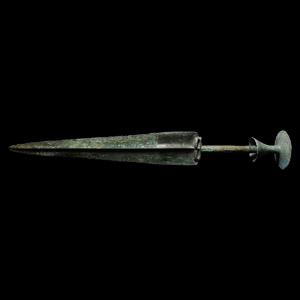

.jpg)



